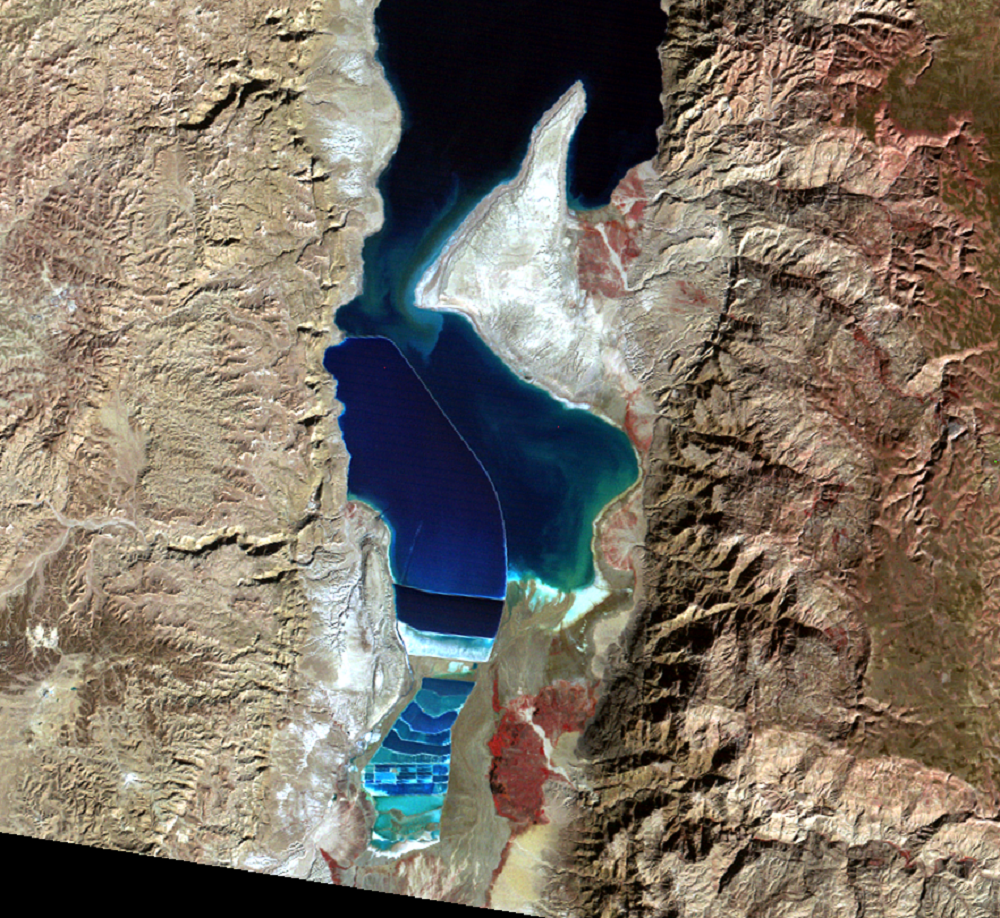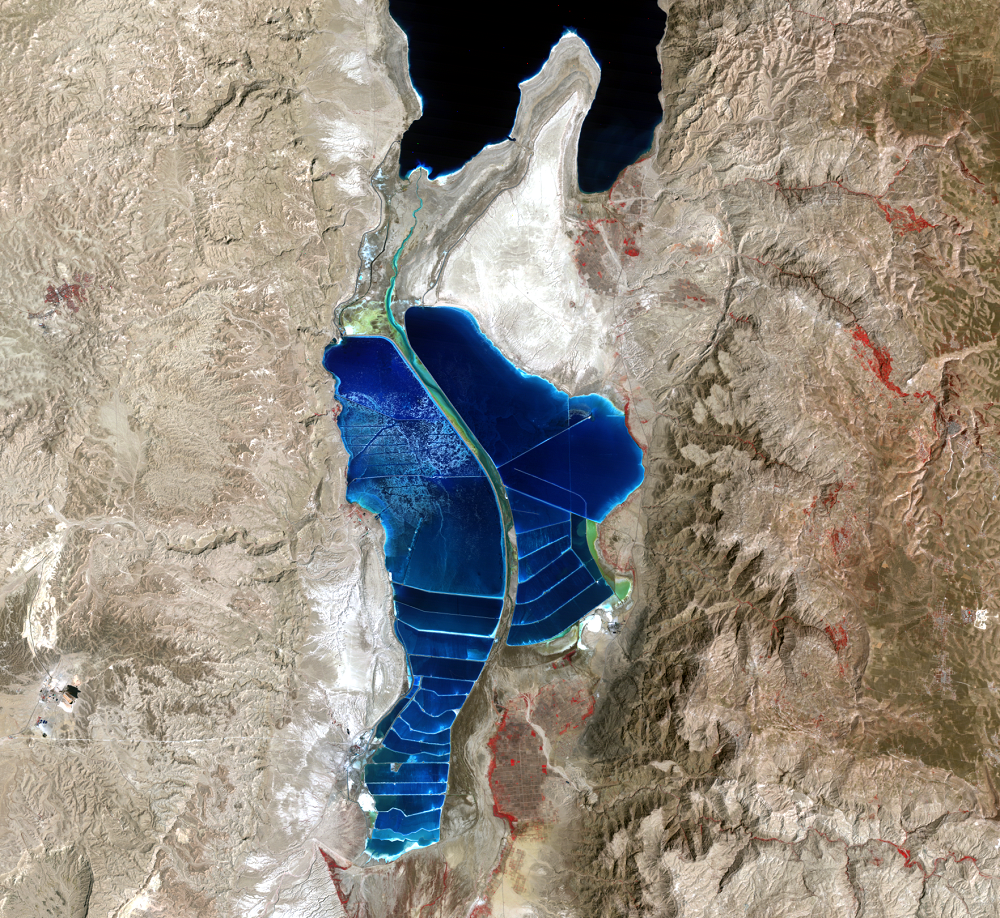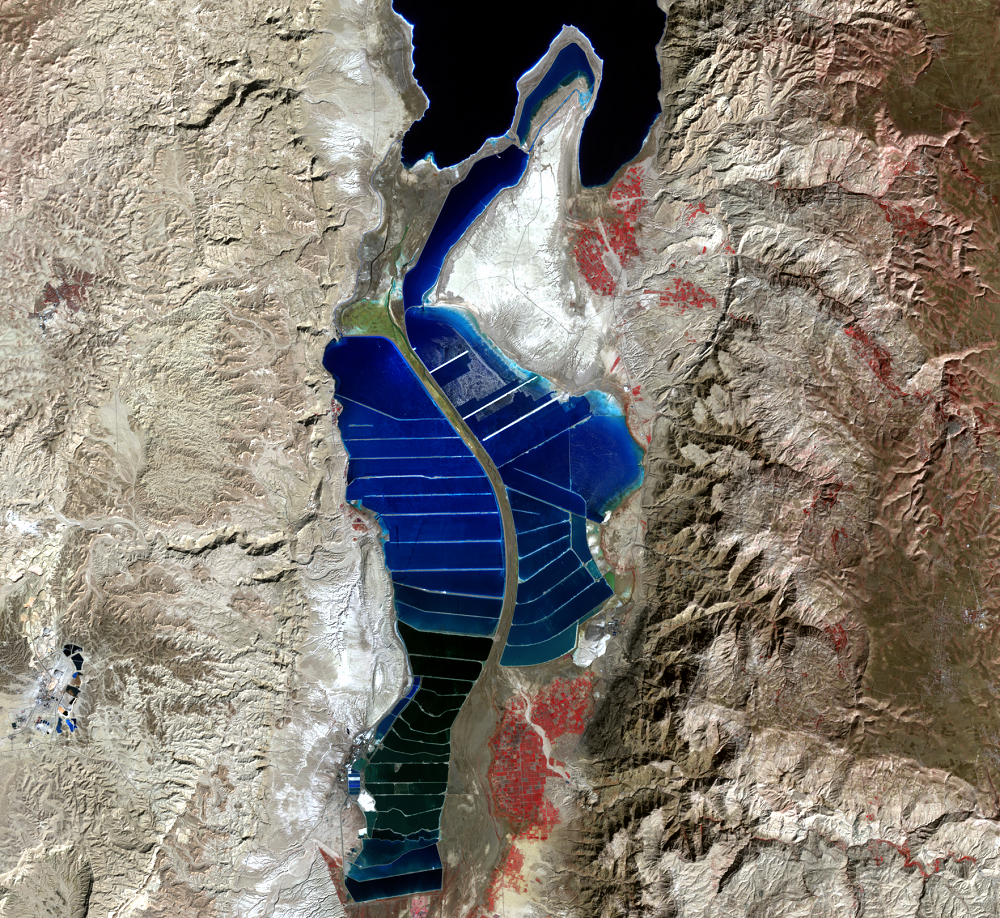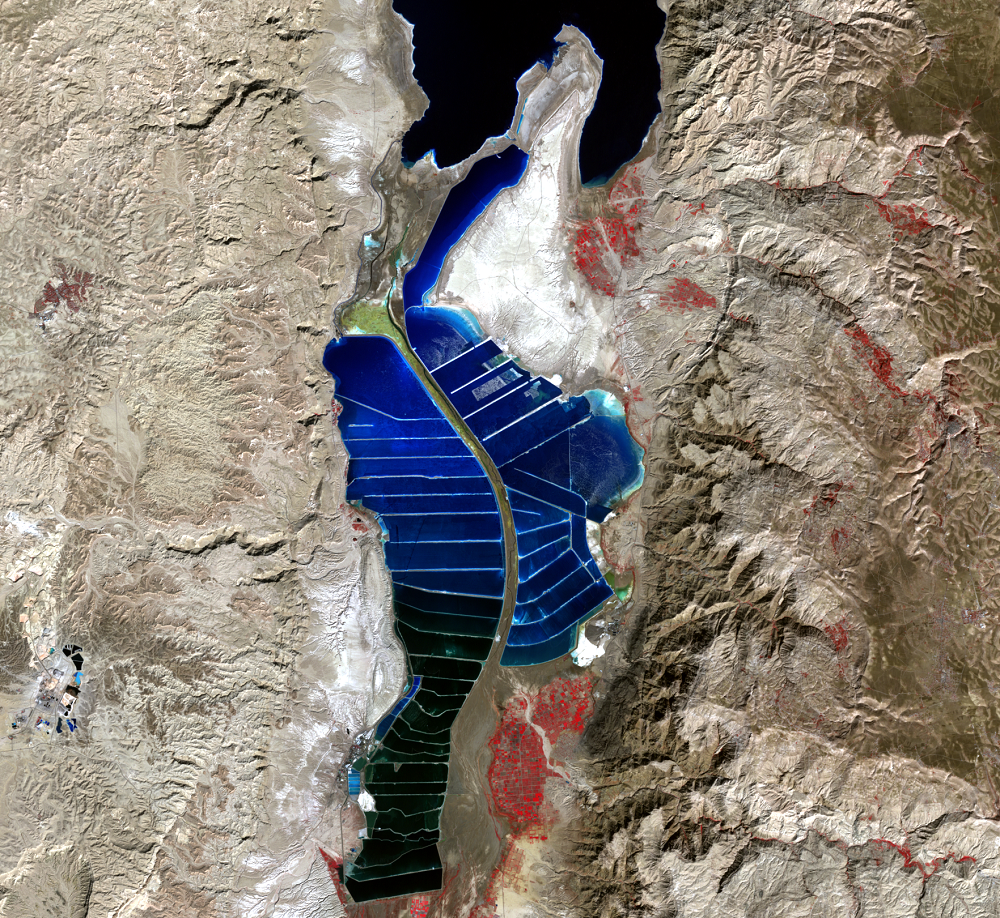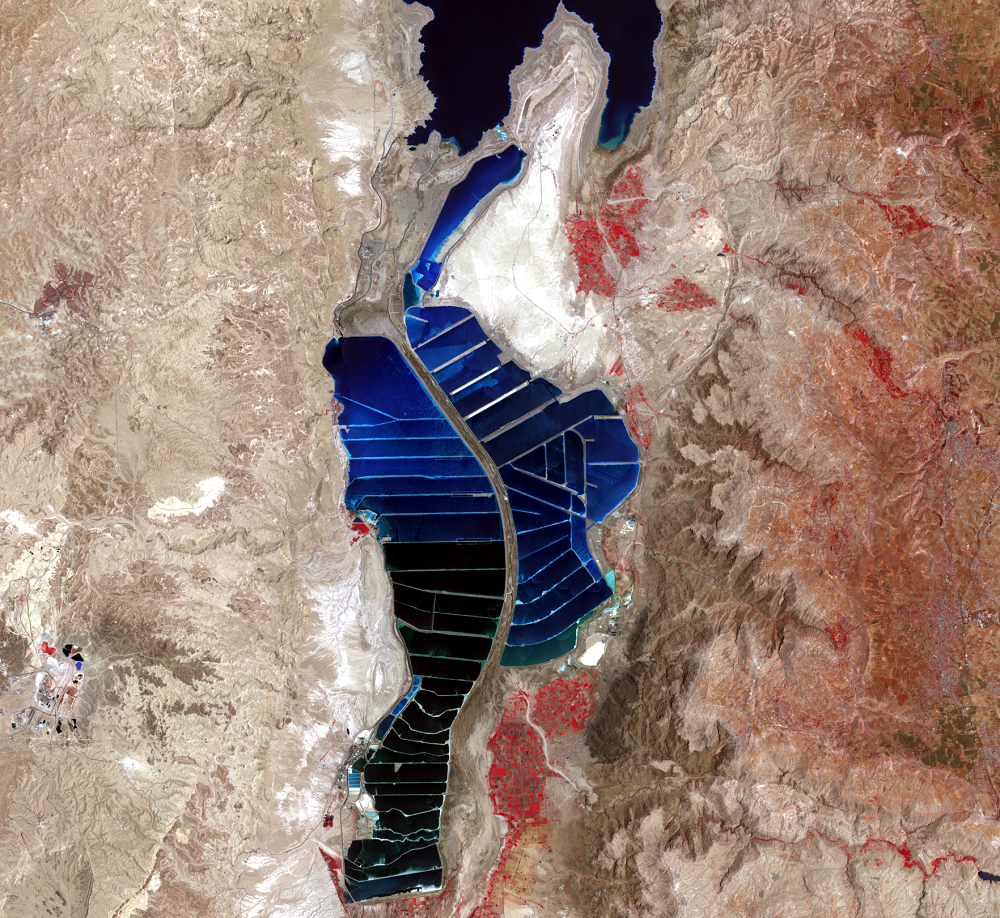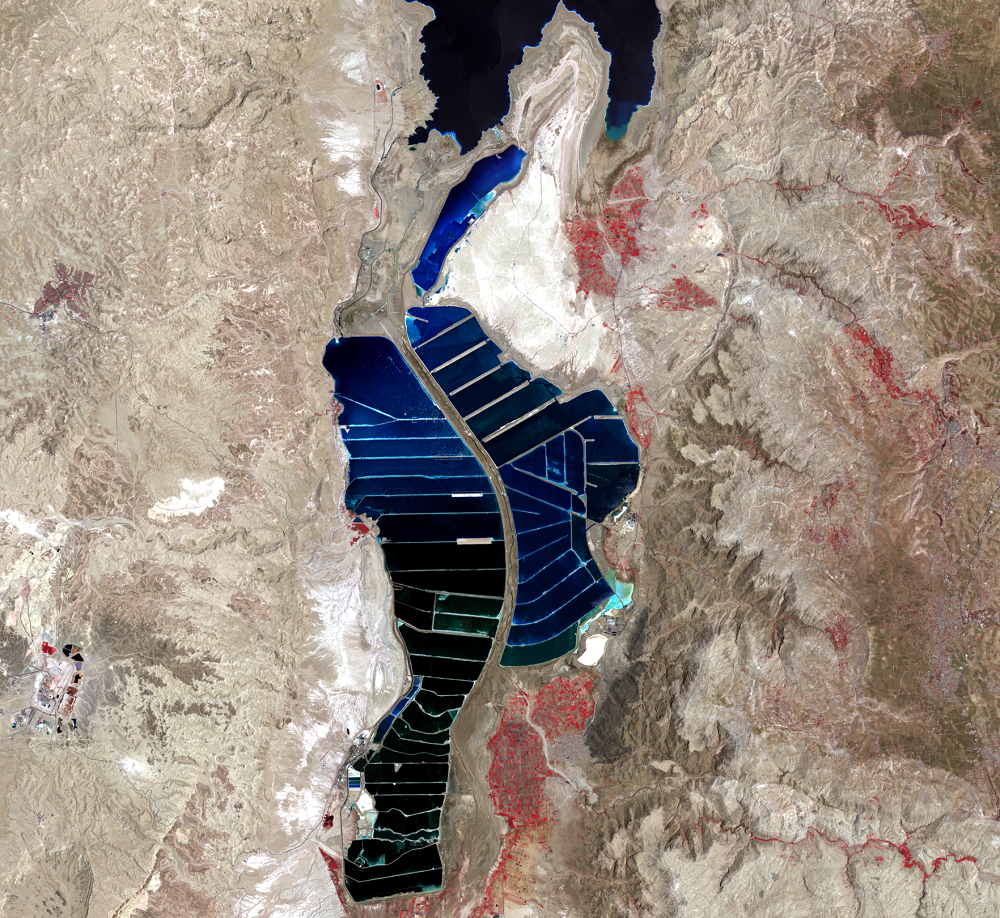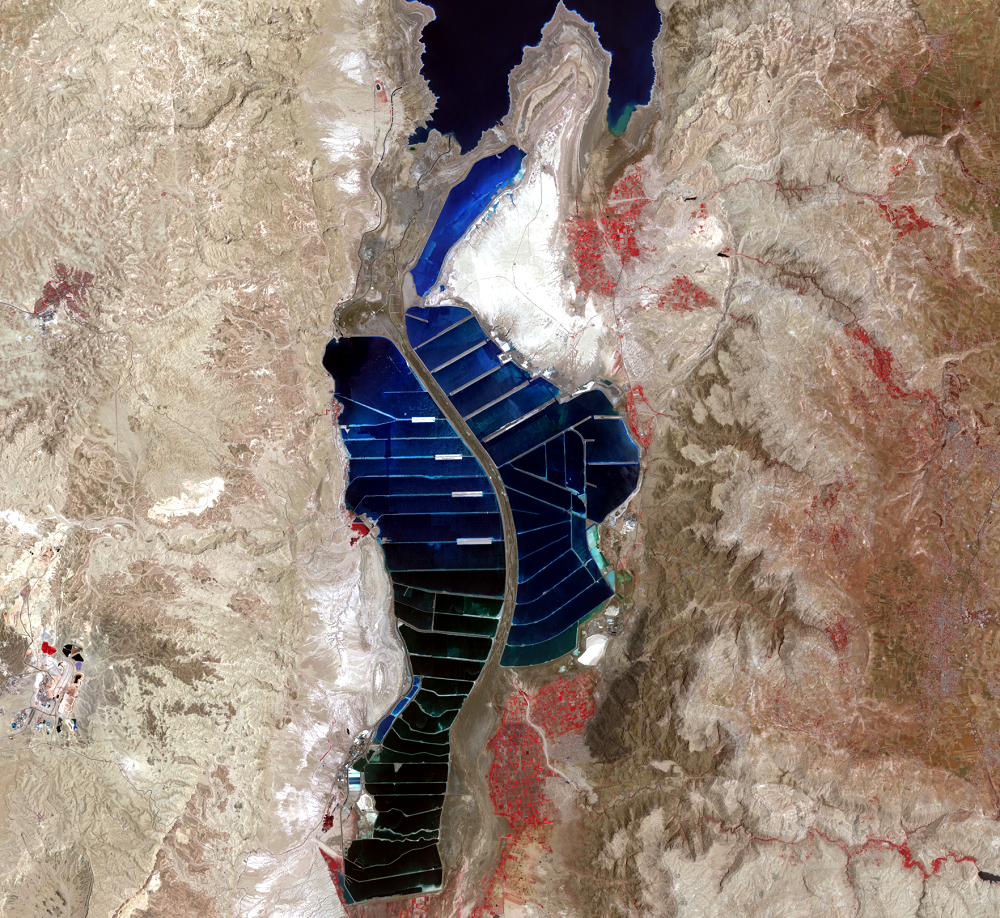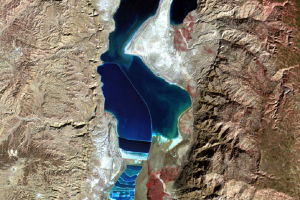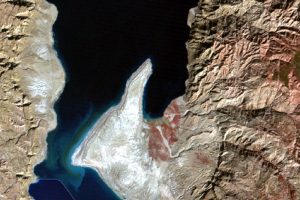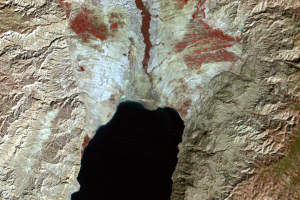The Dead Sea has no outlet. The only way water exits the sea is by evaporation. When the water evaporates, it leaves behind dissolved minerals, making the water even saltier.
Those minerals produce the basis for a valuable potash industry. Companies from both Israel and Jordan extract this raw material for fertilizer from the evaporation ponds in the southern basin. The industries that produce the potash pump water from the Dead Sea into these evaporation ponds. Potash is gathered by moving water from one evaporation pond to another.
Current studies suggest that as Dead Sea water use continues, sea levels could decline to 100 meters below the 1960s level by 2050. It would then become too expensive to pump water into the evaporation ponds.
Other uses of Dead Sea salt include
- skin products
- cosmetics
- bath salts
- water conditioning
- road de-icing
Normally, political boundaries are not visible from space. But in this series of Landsat images, we do see a political feature. The curved line in the southern basin is the border between Israel to the west and Jordan to the east.


